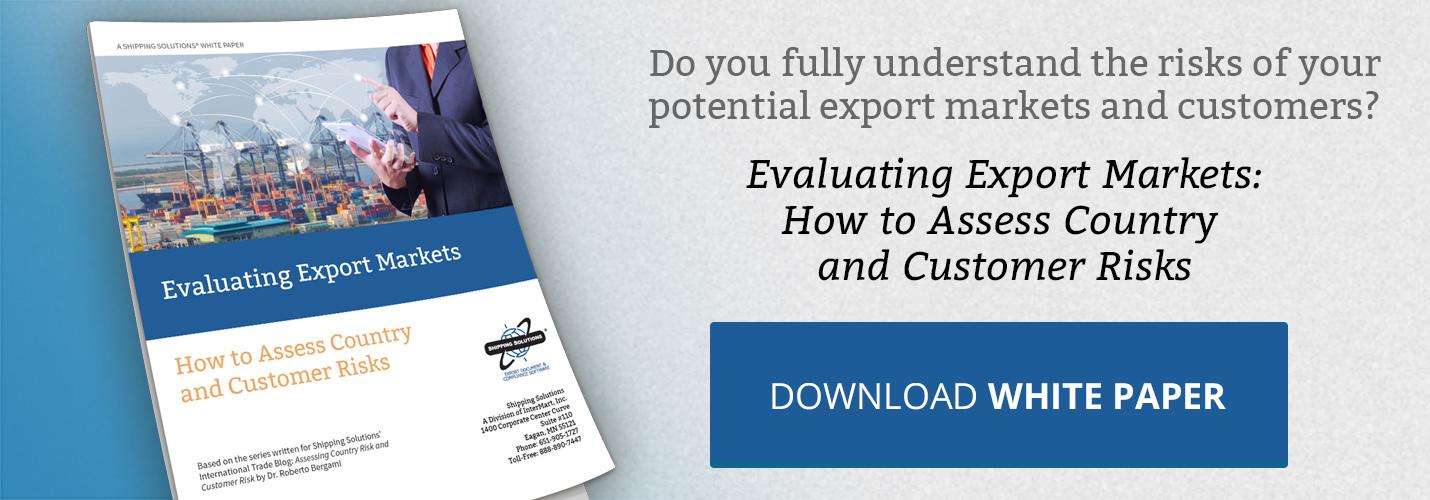The International Trade Blog International Sales & Marketing
A Standby Letter of Credit Helps Sell a Shake Table to a Shipbuilder
On: June 6, 2016 | By:  Roy Becker |
3 min. read
Roy Becker |
3 min. read

A well-established, successful engineering company in Colorado designs and builds so-called shake tables, devices that are used to test the response of structures to vibrations and movements (seismic performance).
Computers programmed to simulate movements ranging from minor vibrations to earthquakes operate hydraulics mounted underneath the table. Manufacturers and electric utilities buy the custom-built tables to test and qualify equipment performance before installation.
This company received an order for a shake table from a shipbuilder in Asia. The buyer wanted the shake table to simulate the vibrations of a ship and the motion of waves. The company wanted to test equipment durability with the shake table before installing the equipment onboard ship.
Payment Terms
To build the shake table to the buyer’s specs, the engineering company had to invest in engineering, parts and labor. Since it would take six months to build the shake table, the company predicted it would experience negative cash flow. To help mollify any long-term financial damage, the supplier negotiated these payment terms:
- Forty percent cash in advance.
- Fifty percent payable by a letter of credit upon presentation of shipping documents.
- Ten percent upon acceptance by the buyer after installation of the shake table and completion of onsite training.
The buyer agreed to the payment terms with one condition for the 40 percent cash payment. It wanted a standby letter of credit for an amount equal to the down payment, payable to the buyer if the exporter failed to build and/or ship the shake table. The standby letter of credit assured the buyer it would get its money back in the event the supplier never produced or shipped the goods.
While the supplier was a proven, capable firm, the deregulation of the energy industry caused its largest market segment to collapse. As a result—and at the time of this Asian contract—the company’s liquid collateral was weak. Its contract with the Asian buyer signaled its intentions to diversify into other markets.
When the bank received the request for issuing the standby letter of credit, it agreed to do so only with cash collateral. This caused a Catch-22 for the supplier. To receive the cash payment, the company needed a standby letter of credit. However, to get the standby letter of credit it needed the cash.
The bank partially resolved the problem by stating in the letter of credit that it would be effective when the bank received $400,000 from the buyer. However, this did not help the supplier’s cash flow. If the bank kept the cash to secure the standby letter of credit, the exporter could not get the cash and, therefore, wouldn’t be better off than before issuing the standby letter of credit.
The Small Business Administration Saves the Day
The Small Business Administration (SBA) of the U.S. government has a program to assist with the financing of exports. The program, the Export Working Capital Program (EWCP), gives guarantees to banks to eliminate most of the risk. In short, if an exporter has an order with an acceptable means of payment and can prove ability to perform, the transaction may qualify for the guarantee.
Since the engineering company had a proven track record of performance with many satisfied customers, the SBA guaranteed the transaction. The bank, therefore, issued the bank a standby letter of credit without cash collateral.
SBA’s guarantee also cleared the bank to advance funds over and above the standby letter of credit, which permitted the company to borrow money to buy raw material and meet payroll during the six months it took to build the equipment.
The company constructed the three-axis shake table on schedule, received payment, and paid off the loan thanks to the SBA.
For more information on financing programs offered by the U.S. government, visit the SBA website.

About the Author: Roy Becker
Roy Becker was President of Roy Becker Seminars based in Centennial, Colorado. His company specialized in educating companies how to mitigate the financial risk of importing and exporting. Previous to starting the training company, Roy had over 30 years experience working in the international departments of several banks where he assisted many importers and exporters with the intricate banking needs associated with international trade.
Roy served as adjunct faculty in the International MBA programs at the University of Denver and University of Colorado in Denver. He conducted seminars at the World Trade Center Denver and The Center for Financial Training Western States, and was a guest lecturer at several Denver area Universities.
Roy retired in 2021.


